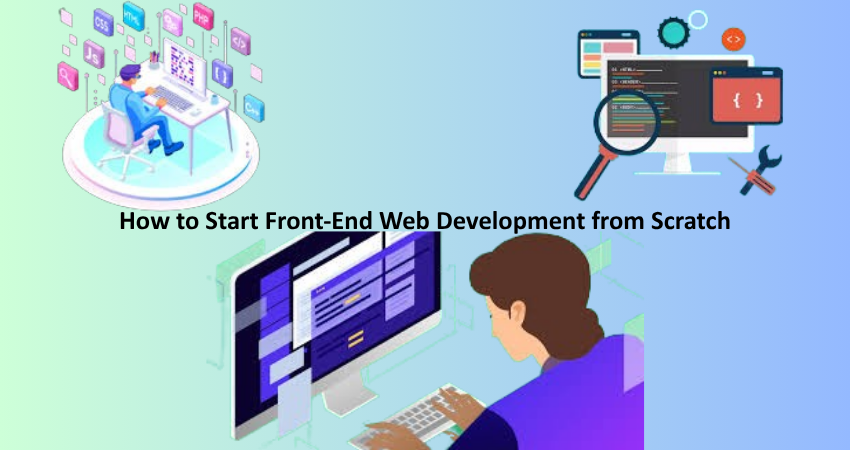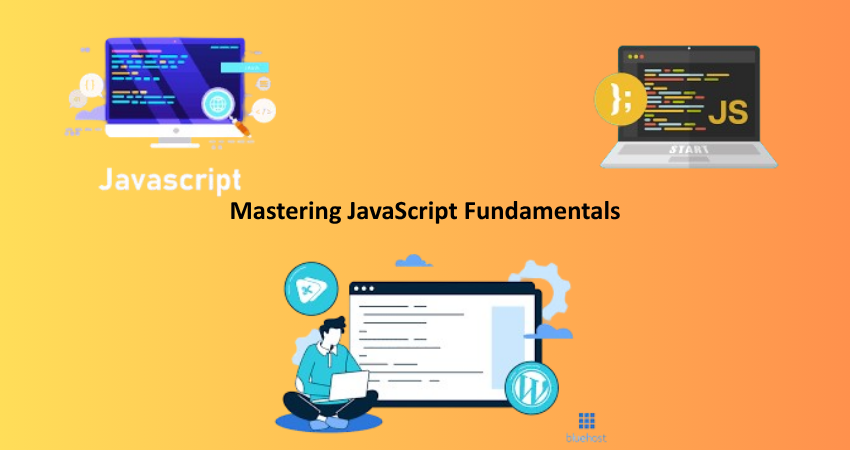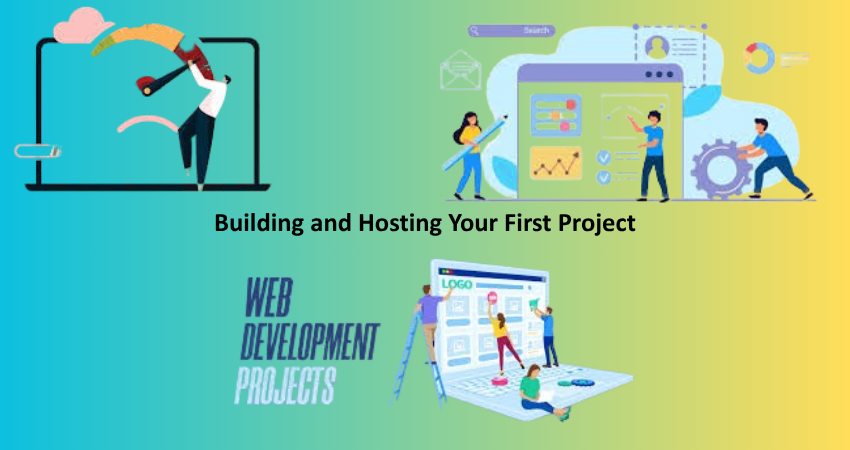
Introduction to Front-End Web Development
Front-end web development involves the practice of writing HTML, CSS, and JavaScript for a website or web application so that a user is able to see and interact with it. In short, everything and anything a user interacts with while visiting the web page-from fonts and colors to dropdown menus and sliders-is termed front-end development. If you are someone who wants to create user experiences that are not only functional but also beautiful, the understanding of how things work on the front end is very important. In front-end development, on the other hand, users interface in real life, which is quite unlike back-end development, which deals with the server side.
It may come as a surprise to hear that this process actually does not seem so easy, especially if any person considers front-end development. That said, now that we have an understanding of the complexity involved in front-end development, let us start breaking it down into simple steps, starting with key concepts that a beginner should understand so as to get a firm grip on the web development process. Learning advanced tools, libraries, and frameworks further enhances your development workflow in creating dynamic and responsive websites.
Learning the Core Technologies: HTML, CSS, and JavaScript
Understanding HTML and Its Role
The very essence of website creation would be aptly described as HTML or HyperText Markup Language. It is responsible for pouring structure into web pages, defining elements such as headings, paragraphs, images, links, lists, and others. Anyone wishing to step into front-end development must know HTML as it presents the skeleton of any web content. Each HTML element consists of tags that help us define how the content is laid out and presented.
The first thing needed for learning HTML is knowledge about its syntax and how tags can be nested into a more complex structure. Work with semantic HTML because it helps in exploiting the full potential of accessibility for users and, all the while, improves the web application’s readability for search engines, thanks to utilizing appropriate tags such as <article>, <section>, or <nav>. Learn more profoundly about how attributes go inside tags and have the capability to alter the behavior or presentation. Once one attains a good grasp of HTML, he gets the other skills to begin building any website’s basic layout and structure that serve as the first building block for a solid front-end foundation.
Styling with CSS
CSS, that is cascading style sheets, is what makes the website’s view impressive, while HTML is what structures the content; CSS defines the layout, colors, fonts, spacing, and responsiveness for the website. Knowing CSS enables a person to style their website-the plain dumb-looking HTML document now becomes one great-looking interface. CSS can be written inline, embedded in the HTML file, or attached from an external link for a better organization and scalability.
Beginners should concentrate on learning some core concepts such as selectors, properties, and values and learn how to use classes and IDs to apply styles into the aspect box model, which helps dictate how a space is given to an element, as well as dimensioning. Responsive design enables one’s site to be able to adjust to different screen sizes by using techniques such as media queries. Today CSS also celebrates Flexbox and Grid systems for easier implementation of complex layouts. Mastering CSS is essential in rendering very great, usable designs.
Mastering JavaScript Fundamentals

The Importance of JavaScript in Front-End
To get this into much simpler terms, JavaScript is indeed a programming language which does things that put some activity and dynamic behavior on websites. Activities of JavaScript range all the way from very simple animations to sophisticated single-page applications. Without JavaScript, web pages would just be static and extremely unresponsive. So, if you’re a front-end developer, then learning JavaScript really is necessary to manipulate the Document Object Model (DOM) for responding to user actions and communicating with API services in the backend.
Learn important basic concepts such as: variables, data types, functions, loops and conditional statements. Once you’re good with the basic syntax, move on toward DOM manipulation since it allows you to update the dynamic content and style of a webpage. JavaScript also enables event handling so that you can respond to user input such as clicks, form submissions, and other form of event-triggered value collection. Once you have those principles down, you’ll soon be doing all manner of advanced things such as asynchronous programming, closure, and object-oriented design.
JavaScript Tools and Practices
After grasping the fundamentals of JavaScript, part of that exploration involves the kinds of tools and practices that will further enhance the coding experience. One such tool would be the browser developer console, which is where one can debug or play around with some code in real time. The other major benefit you’ll get out of learning how to use the browser DevTools is that you’ll develop the skill of searching for a performance issue and testing it online. Next would be version control via Git for tracking changes and collaborating with someone.
Make writing code a regular habit and do many small projects to help solidify what you know. Rapidly test new ideas on sites like CodePen, JSFiddle, or Replit. Once you feel comfortable with vanilla JavaScript, begin exploring libraries like jQuery or frameworks like React. They come in handy to ease tedious tasks and make the code more organized. Understand concepts of best practices in code readability, DRY (Don’t Repeat Yourself), modular programming, and so on to mark you as an accomplished front-end developer.
Getting Comfortable with Developer Tools
Introduction to Code Editors
Selecting the right code editor can increase your mileage as a front-end developer highly. Usually, websites prefer editors such as Visual Studio Code (VS Code), Sublime Text, and Atom. They can do so much more than just editing a text file, like syntax highlighting, code auto-completion, and having integrated terminal access. Of these three, VS Code rules when it comes to web developers due to its many extensions, a highly active community of users to rely on, and having Git embedded within it.
You can explore very useful extensions such as Prettier for formatting, ESLint for code quality, and Live Server for real-time previews to best maximize the capabilities of the code editor you are using. Getting to know shortcuts and customizing them to fit your normal working environment will help you save a greater amount of time and avoid making mistakes. Your code editor, when set up properly, will become one of the core tools in your front-end toolbox and, ultimately, help you write, test, and debug code.
Exploring Browser Developer Tools
The Developer Tools found in a modern web browser essentially make the life of a front-end developer. Not only are they found in Chrome, Firefox, or Edge, they allow one to inspect and modify HTML, CSS, and JavaScript in real-time. With tools like the Elements panel, Console, Network tab, and Performance tab, a developer is able to diagnose layout issues, do style testing, check network requests, and assess performance.
Utilization of Developer Tools thus ensures fast debugging and fixing of issues which eventually contribute to a more delightful user experience on web pages. The Elements panel is one example that lets you inspect the DOM structure and perform live CSS changes on the fly. The Console highlights JavaScript errors and helps in testing code snippets quickly. Familiarity with these scenarios will surely bring a product faster to market and add value to it.
Understanding Web Design Principles
Importance of Layout and Typography
Of course, not just good enough; that’s usability as much as explaining the design. To do justice to these two properties, layout and typography are those attributes that speak toward their informative qualities with regards to any web page. An intuitive layout helps users navigate their contents easily, while effective typography ensures readability and access. All these will have direct implications on user experience, conversion rates, and brand perception.
Layout refers to organizing elements through white space, visual hierarchy, or alignment. Proficiency in CSS Grid or Flexbox could also allow the developer to create a fully responsive form, not overly balanced. Typography means selecting the best readable font, right font size, line heights, and white space in terms of spacing to facilitate easy consumption of content. An excellent developer knows about how design spoils the functionality and usage by a user, thus, making this knowledge primary when creating effective user interfaces front end.
Color and Visual Consistency
Color has such an impressive role in the meaningful communication of any brand identity, conveys the attention of users, and helps evoke emotions as desired. As a front-end developer, one would really need to know some basic color theory, contrast, and accessibility such that their sites would be inclusive and appealing. Once consistency in color is chosen, the overall design becomes cohesive and will serve to make the design even more esthetic.
And accessibility will be one of the main guidelines for your color choices. Color contrast must be appropriate enough between text and background colors, color palettes that are friendly to color-blind users, and also make sure important information is not displayed using color only. Use contrast-checking tools and accessibility audits in browser DevTools to validate your choices. By ensuring a consistent visual language across different components, usability improves, trust is created against the application itself, and the whole experience feels much better for the user.
Building and Hosting Your First Project

Starting a Simple Web Project
Your first web project is the landmark that you cross as you build your front-end development competencies. Simple would be to start with your personal portfolio, a to-do list, or a landing page. It can be utilized to improve your skills in HTML, CSS, and JavaScript in a real-life scenario. You have a wireframe that could be put on paper or created by using Figma, to kind of visualize what you really want or are planning on doing with regard to the layout and features.
Create a clean directory structure that consists of folders for HTML files, folders for CSS stylesheets, and folders for JavaScript scripts. Write clean, semantic HTML, rather beautify it using CSS, and so on, having interactivity with the use of JavaScript. Check this project in various browsers and devices so that it stands robust against cross-platform compatibility. Make code modular, readable, and organized. Use Git for keeping track of the changes in your project from the start. You would have something in your hands that is small yet functionally complete to obtain confidence and a good addition to your portfolio for potential employers or clients.
Hosting Your Website
It allows people to view your work, that is, hosting your project online. There are some free or paid hosting platforms, out of which GitHub Pages is very famous for beginners. The first step in using GitHub Pages is to create a new repository for your project, push in your code, and enable GitHub pages in settings of repository. Your site will be up and running within minutes on a GitHub domain.
Other platforms, such as Netlify, Vercel, and Firebase, allow custom domains and continuous integration along with backend support. These services are often integrated with Git repositories in a way that automate deployment. Knowing the basics of hosting gives you the freedom to show your work to other people, collect feedback, and improve based on user input-this is a crucial step toward becoming a professional front-end developer.
Conclusion
Front-end web creation from the very beginning seems so easy to be the most boring undertaking or the daunting task on earth but analyzing, dissecting, and merging into tiny bites one at a time really becomes a much sweeter journey and payoff in the end. By mastering basic technologies like HTML, CSS, JavaScript, and discovering one’s top tools and finally building your projects alone, a person will have the best groundwork to grow. Soon, one will be prepared to face more sophisticated challenges that add value to true web development.
Key is to keep practicing, be curious, and be willing to learn. With free resources, tutorials, and a plethora of communities on the internet, there probably has never been a better time to enter into front-end development. Do it stepwise, and you maybe will discover you have moved faster than you could have believed.